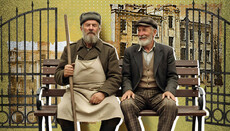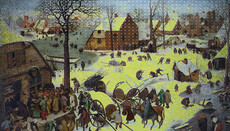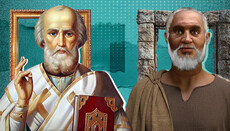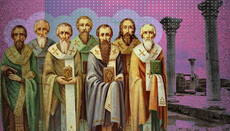II Ecumenical Council: 7 Resolutions of the Council of Constantinople
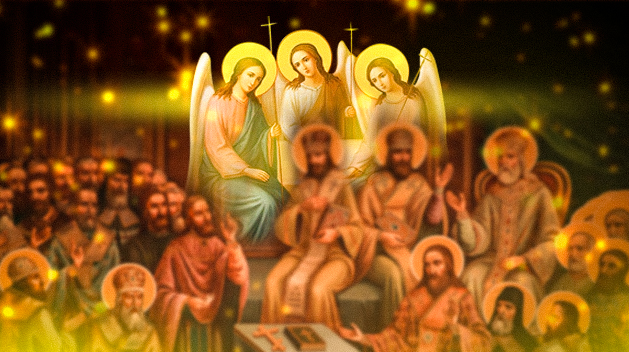
Today we are going to talk about the Council that was recognized as Ecumenical only 300 years after it was held, namely the Second Ecumenical Council.
The Council of Constantinople was not ecumenical at the time and The Nicene-Constantinopolitan Creed was not approved at it. What other mysteries are associated with this Council and what is its significance for subsequent Church history?
With the First Ecumenical Council of 325, the Arian controversy in the Church did not end but even intensified. The victory of the Arian heretics over the Orthodox was so all-encompassing that only St. Athanasius the Great, Bishop of Alexandria, stood firm in pure Nicene theology in the whole East, and he too was forced to hide. Incidentally, during one of these periods, he found refuge with the founder of hermitage monasticism, St. Anthony the Great. The result of the communion of the two great saints was the well-known hagiography of St. Anthony, written by St. Athanasius.
At a time when the Arian controversy was raging in the East, when the Arian emperors were repressing the Orthodox and establishing different versions of Arianism, in the West the Nicene faith, in which both the Roman bishops and the Western emperors were standing, was being established. This is explained not only by their personal commitment to the Orthodox faith but also by the fact that for Westerners the creative quest of Eastern theologians and their attempts to clarify and explain the Truth was simply uncharacteristic. The Western worldview was more prone to simple clear formulations than to discovering the real meaning behind those wordings.
And so it was from the West that the victory of Orthodoxy came to the East at the end of the 4th century.
Background to the Second Ecumenical Council
This prehistory can begin with the story about how Emperor Flavius Valens, the protector of Homoians (moderately Arian current, which acknowledged that the Son is "like" the Father) and the persecutor of the Orthodoxy was going on a military march against the Goths, quite tightly pressing at that time the Byzantine Empire. On the eve of the campaign, the famous ascetic Saint Isaakios of Dalmatia, who lived in the vicinity of Constantinople, came to Valens.
Saint Isaacios addressed the emperor with the words: "Where are you going, Caesar, to make war against God? After all, it was He who raised these barbarians against you. Return shepherds to the churches and you will gain victory. If not, you will not return and you will ruin your army. Emperor Valens sent the saint away with the words: "I will return and then I will do away with you. You will answer for the false prophecies".
But the emperor failed to return. On 9 June 378 at the battle of Adrianople he was defeated, with almost all his army perishing. Flavius Valens himself was burnt to death in one of the village huts, in which he tried to hide from the Goths and which they set on fire without even suspecting that the emperor was hiding there.
After the Battle of Adrianople, the barbarians invaded and practically occupied vast areas of the Byzantine Empire. Only the lack of civilization and state consciousness prevented them from creating their own Gothic statehood here. The Byzantines themselves had to restore this statehood. To do this, the Western Roman emperor Gratian sent one of his generals, the Spanish general Theodosius, to the East, conferring on him the imperial title of Augustus. Both Theodosius himself, later called the Great, and his wife Flaсilla were staunch supporters of Orthodoxy and regarded the death of Valens as a punishment for heresy.
Theodosius himself, later called the Great, and his wife Flaсilla were staunch supporters of Orthodoxy and regarded the death of Valens as a punishment for heresy.
Theodosius did not immediately arrive in Constantinople, but stayed for two years (379-380) in Thessalonica, from where he negotiated quite successfully with the Goths. Here a very revealing and rare event for the relations of secular rulers with ecclesiastical power happened to him. In military circles, a conspiracy against Theodosius was formed or rather just started to form. The emperor nipped it in the bud, inflicting a bloody massacre on the conspirators and those who could potentially sympathize with them. The Bishop of Thessalonica, St. Ascholios, accused Theodosius of excessive cruelty and did not let him into the temple for worship. Moreover, the bishop took off the emperor's royal porphyry and put on him a penitent’s shirt. In such kind, the emperor had to stand at the temple doors and ask for prayers from those entering. Theodosius not only obeyed Bishop Ascholius, but later he did not take revenge on him, unlike in other similar cases.
In 380, Theodosius issued a decree affirming the Orthodox faith, which reads: "It is our desire that all the various nations which are subject to our Clemency and Moderation should continue to profess that religion which was delivered to the Romans by the divine Apostle Peter as it has been preserved by faithful tradition and which is now professed by the Pontiff Damasus [Bishop of Rome] and by Peter, Bishop of Alexandria, a man of apostolic holiness. According to the apostolic teaching and the doctrine of the Gospel, let us believe in the one deity of the Father, the Son and the Holy Spirit in equal majesty and in a holy Trinity."
The adherents of this faith were declared to be the only true Christians, while all others were branded as heretics, of whom it was said: "They will suffer in the first place the chastisement of the divine condemnation and in the second the punishment of our authority that in accordance with the will of Heaven we shall decide to inflict.”
Almost all the churches in Constantinople were Arian. However, there was also a rather small group of Orthodox who invited St Gregory the Theologian to Constantinople.
At the same time, a rather interesting ecclesiastical situation developed in Constantinople itself. The Bishop of Constantinople at that time was Demophilus, who adhered to Arianism in the form of Homoianism. Almost all the temples of the city were Arian. However, there was also a rather small group of Orthodox who invited to Constantinople St. Gregory the Theologian, who lived in seclusion in Seleucia of Isauria, and before that was ordained bishop of the provincial town of Sasima, where he actually never episcopated.
St. Gregory was of short stature and a rather plain appearance, but he was an excellent orator and the most exalted theologian. In Constantinople, he settled with his relatives and began to perform divine services in one of the rooms of their house, which he called the Anastasia temple. Soon, thanks to the eloquent sermons of St. Gregory, masses of people began to flock to him. Supporters of Homoianism tried to intimidate the preacher and even staged a murderous pogrom in his church at Easter.
After he settle down in Constantinople, Emperor Theodosius issued a decree according to which Gregory became the metropolitan Bishop, the Basilica of the Twelve Apostles and the Hagia Sophia were given at his disposal, and subsequently all the churches of Constantinople. The population of the capital took this decision with hostility and almost staged a rebellion against the emperor. Theodosius had to personally, with the help of troops, bring St. Gregory into the Hagia Sophia.
In one of his letters, St. Gregory tells about it this way: “The temple was surrounded by warriors who, armed and in large numbers, stood in rows. There, like the sea sand and the cloud, all the people strove, ceaselessly increasing in number, with anger and groaning at me, with entreaties to the emperor. Streets, stadiums, squares, and even two- and three-storey houses were filled from top to bottom with spectators – men, children and elders. Everywhere there is vanity, sobs, tears, cries – an exact likeness of a city taken by storm ... And I, a valiant warrior and governor, hardly catching my breath, was walking among the troops.”
The emperor was well aware that St. Gregory's enthronement as bishop of Constantinople, as well as the introduction of the Nicene faith, had to be approved by the Council.
However, the emperor was well aware that St. Gregory's enthronement as bishop of Constantinople, as well as the introduction of the Nicene faith, had to be approved by the Council. At the same time, another interesting story took place in Constantinople which influenced both the Council itself and subsequent events. The thing is that St. Gregory the Theologian was a representative of the Antiochian theological school, which was in opposition (in the figurative, and sometimes in the direct sense) to the Alexandrian school.
In the period of ecclesiastical turmoil in Constantinople and the uncertain position of St. Gregory, the Alexandrians made an attempt to put their candidate to the Metropolitan See in the capital. This was the philosopher Maximus, later nicknamed the Cynic, who arrived in Constantinople and was warmly received by St. Gregory for his devotion to the Nicene faith. But soon some bishops arrived from Alexandria secretly to ordain Maximus as bishop of Constantinople. So, the Council had to give an assessment of Maхimus the Cynic's actions, as well as to determine his status.
The Proceedings of the Council
Emperor Theodosius summoned bishops only from his eastern part of the empire and only those who adhered to the Nicene faith. There were quite a few participants in the Council, only 150 bishops. Thus, the Council was not ecumenical but rather All-Eastern; and even then, it was rather small in number. There was an attempt to invite 36 bishops from Hellespont, who denied the divinity of the Holy Spirit, but after negotiations they refused.
Pope Damasus, then bishop of Rome, was not even informed about the Council. In the decree convening the Council, the emperor forbade any disputes about the faith. He had no need for them, only the approval of the already existing Nicene faith and the solution of practical issues, such as the approval of the Bishop of Constantinople.
There was an attempt to invite 36 bishops from Hellespont, who denied the divinity of the Holy Spirit, but after negotiations they refused.
The Council opened in May 381 in Constantinople, Emperor Theodosius was present at its opening, but neither he nor his representatives subsequently took part in the work of the Council. At the beginning of the Council, it was presided over by Bishop Meletios of Antioch, but soon he died. Then St. Gregory the Theologian, whom the Council approved as Bishop of Constantinople, became the chairman. However, he served as a metropolitan bishop for a very short time. He was removed under very revealing circumstances and on even more revealing grounds.
The fact is that the deceased Bishop Meletios of Antioch didn't episcopate in Antioch alone but headed one of the opposing Antiochian church groups, of which there were four at that time: the Arians, Meletians, Eustathians and Apollinarians. In parallel with it, the Eustathian group nominated Paulinus as bishop and that caused a schism in the Antiochian Church. For the purpose of reconciliation, Meletios of Antioch offered Paulinus to govern together, but the latter refused. For the same purpose, after Meletios died, St. Gregory the Theologian put forward a proposal at the Council of Constantinople in 381 not to elect a successor to Meletios but to recognize Paulinus as bishop of All Antioch. But the Council failed miserably in this proposal and elected Flavian as Bishop of Antioch.
This fact undermined the authority of Gregory in the eyes of the Council members. Moreover, just at this very moment, two bishops of the Alexandrian school arrived at the Council and demanded that Gregory be deposed from the Constantinople See under the pretext that he had been ordained Bishop of Sasima and that one of the canons of the First Ecumenical Council forbade moving bishops from one see to another.
Gregory's "guilt" in the eyes of the Alexandrians consisted only in the fact that he was a representative of the Antiochian school, and the Alexandrians did not give up hope of appointing their own candidate as Bishop of Constantinople.
The "guilt" of Gregory in the eyes of the Alexandrians consisted only in the fact that he was a representative of the Antiochian school, and the Alexandrians did not give up hope of appointing their own candidate as Bishop of Constantinople. St. Gregory did not resist and retired again to his seclusion. Nectarius, an unbaptized civil official (according to the sources "with a troubled past"), was chosen to succeed Gregory as president of the Council. It is interesting that St. Gregory wrote in one of his letters about the reason for his stepping down: "Those and others set upon each other (I will say something in imitation of tragedians) like wild boars sharpening their teeth at each other and crossing each other with their eyes of fire. Touching on many issues, moreover, they were guided more by irritation than by reason, they saw in my case something very bitter when they began to go over the laws which had no longer been in force, from which I was most certainly and clearly free...." That is, he called Canon 15 of the First Ecumenical Council "not in force for a long time" and since its adoption only 56 years had passed, which makes you wonder: was it in force at all? At the very least, there is no doubt that it was applied very selectively.
The Council passed seven Decrees, which the Emperor further approved. Theodosius also ordered that churches be taken away from all those who disagreed with them and given to the Orthodox.
Canons of the Second Ecumenical Council
Canon 1: “The Faith of the Three Hundred and Eighteen Fathers assembled at Nice in Bithynia shall not be set aside, but shall remain firm. And every heresy shall be anathematized, particularly that of the Eunomians or [Anomoeans, the Arians or] Eudoxians, and that of the Semi-Arians or Pneumatomachi, and that of the Sabellians, and that of the Marcellians, and that of the Photinians, and that of the Apollinarians.”
This Canon reaffirmed the Nicene faith and anathematized doctrines that disagreed with it, which were essentially varieties of Arianism, namely:
- Eunomians – taught that the Holy Spirit is not God, but was created according to the will of the Father through the Son;
- Anomoeans – denied the consubstantial persons of the Holy Trinity, arguing that the Son and the Holy Spirit are in no way similar to the Father;
- Homoiousians – taught that the Son of God was not begotten of the Father, but created and like the Father;
the Macedonians (they were also called Semi-Arians or Pneumatomachi) – taught that the Holy Spirit was lower than the Father and the Son, that He was begotten and like angels; - Sabellians – recognized that the Father, Son and Holy Spirit are one Godhead;
- Marcellians – denied the eternal hypostasis of the Son and taught that after the end of the world there will be an end to the kingdom of Christ and even His very existence;
- Photinians – argued that Jesus Christ was just a man in whom the Divinity dwelt with special fullness, but He was not eternal;
- Apollinarians – attributed to Jesus Christ a human body and a human soul (similar to animals), but not a human spirit, instead of which they recognized the Logos in Him, denied the human will in Christ and, in general, the God-manhood of Christ.
Canon 2 forbids bishops to interfere in the affairs of other Local Churches, although the very concept of a Local Church had not yet been formed at that time. It reads: "The bishops are not to go beyond their dioceses to churches lying outside of their bounds, nor bring confusion on the churches...", and then specifically lists these quasi-local Churches: of Alexandria, Antioch, Assia, Pontus, and Thracia. At that, their canonical territories are listed, as we would say now. As can be seen, neither the Church of Constantinople nor the Church of Jerusalem is mentioned. The Roman Church is not indicated, because the Council itself was, as already said, All-Eastern and did not concern the Western Church. This does not speak in favour of the theory of the so-called "pentarchy" to which some people still turn today, wrongly thinking that the five most ancient Local Churches were supposedly given the right to decide all issues of Orthodoxy.
Canon 3: "The Bishop of Constantinople, however, shall have the prerogative of honour after the Bishop of Rome; because Constantinople is New Rome."
This Canon is very remarkable because it is the one to which the representatives of the Patriarchate of Constantinople like to refer today in justifying their claim to supremacy in Orthodoxy. Here we should pay attention to the following: first, this is a prerogative solely of honour, not of authority. Secondly, it goes only of the Bishop of Constantinople, and not of the Local Church, which did not exist at all at the time, since Constantinople itself was part of the Heraclius Metropolis. Thirdly, the preceding Canon 2 does not name the Church of Constantinople and does not grant it any canonical territory as the other Churches. And fourthly, the ground for the prerogative of honour is given, and this is exclusively the political position of Constantinople as the new capital of the empire. This means that with the disappearance of this ground the whole Canon becomes null and void.
It should be noted that this Canon, like the Council as a whole, caused outrage in Rome, where they flatly refused to recognize the elevation of the Bishop of Constantinople. Some church historians believe Rome's rejection of this Canon laid the foundations for the separation of the Churches in 1054.
Сanon 4 invalidated the consecration of Maximus the Cynic, as well as all his "clergy".
Canon 5 is considered by some to be an affirmation of the Niceno-Tsaregrad Creed, but the text itself does not give grounds for this. It sounds like this: “With regard to the tome of the Westerns, we agree with those in Antioch who (accepted it and) acknowledged the unity of the Godhead of the Father, and the Son, and the Holy Spirit.” The “tome of the Westerns” is apparently some kind of written confession of faith, but it is not possible to determine exactly which one.
Canon 6 is a rather interesting testimony to the way in which the Church was concerned on the one hand for the purity of her ranks, and on the other hand, for not giving enemies of the Church grounds for attacking the Orthodox faith. The text of this Canon is not cited here since it is quite voluminous and cumbersome. Its meaning boils down to the fact that if complaints and accusations of a private nature are received against the bishop, for example, about property disputes or damage, then “in such accusations no examination shall be made, either of the person or of the religion of the accuser”, that is, “he who says he has been wronged should meet with righteous judgment, of whatever religion he may be”. This is done so that the bishops do not abuse their position and do not evade responsibility if they really have committed some kind of offence.
But when it comes to accusations of an ecclesiastical nature, then the Canon suggests a completely different approach to them: “But if the charge alleged against the Bishop be that of some ecclesiastical offence, then it is necessary to examine carefully the persons of the accusers.” Thus, the Canon forbids accepting a complaint against a bishop on church matters from heretics who have been excommunicated from the Church and from clerics who have been subjected to canonical bans. Charges from others must first be laid to "before all the Bishops of the Province", and if this does not lead to the restoration of justice, "then the parties must betake themselves to a greater synod of the bishops of that diocese called together for this purpose". At that, the accusers must promise in writing to undergo an equal penalty if, in the course of the examination, they shall be proven to have slandered the accused bishop.
Canon 7 defines how to receive into the Church people coming from various heretical communities. Some are supposed to be re-baptized, while others are only anointed with the Holy Myrrh, depending on the degree of disagreement of a particular heresy with Orthodox teaching.
The Niceno-Tsaregrad Creed
As has already been mentioned above and as we can judge from the text of the decrees of the Council, the Second Ecumenical Council did not approve the text of the Creed. Some scholars believe that it could not do this because it was not conceived and was in fact not an ecumenical but a local Council, in which a rather small number of eastern bishops participated. Also, there is no evidence that any of the participants in that Council later attributed the text of the Niceno-Tsaregrad Creed to the Council. This could have been in some writings, memoirs, other written monuments and so on. However, there was nothing of this kind. And yet church tradition ascribes the Creed to the First Council of Constantinople, also known as the Second Ecumenical.
Church historian A. Kartashev writes: "It was only several centuries later that the ecumenical value of both the Council of Constantinople of 381 and the Creed now associated with it was indisputably recognized. The latter began its ecumenical existence in the bosom of this Council. But the circumstances of its birth are still (and will probably remain forever) precisely and protocol-wise obscure. It is only since the Fourth Ecumenical Council of Chalcedon in 451 that our Symbol has begun to become universally known and binding.”
English scholar F. J. A. Hort suggests that the Niceno-Tsaregrad Creed is nothing other than the local baptismal symbol of faith, which was used in Jerusalem and was probably recited at the sessions of the Second Ecumenical Council by St Cyril of Jerusalem.
English scholar F. J. A. Hort suggests that the Niceno-Tsaregrad Creed is nothing other than the local baptismal symbol of faith, which was used in Jerusalem and was probably recited at the sessions of the Second Ecumenical Council by St Cyril of Jerusalem. This hypothesis is based on the fact that St Cyril wrote his famous Catechetical Lectures to those who are going to be baptized (catechumens) and to the newly baptized.
Another western scientist, the German scholar Kunze hypothesizes that the text of the Creed represents the profession of faith of the newly-ordained Archbishop Nectarius, which he presented to Emperor Theodosius before his enthronement, and which was also the local baptismal symbol, given to Nectarius by one of the bishops participating in the Council.
Another version holds that the Fathers of the Second Ecumenical Council sent the materials of the Council to the Western episcopate, among which was the profession of faith in the form of a brief symbol.
All such assumptions boil down to the fact that the text that we call the Nicene-Tsaregrad Creed is a local baptismal symbol that was used at baptism in one of the Local Churches, and which was voiced in one way or another at the Second Ecumenical Council and was included in the texts of its acts which have not yet come down to us. It was so successful, however, that it spread throughout the Church, both in the East and in the West. That is, it was received by the whole Church, and because it was presented at the Second Ecumenical Council, although it did not enter textually into the decrees of the Council, it is traditionally associated with it.
A. Kartashev writes: "This symbol, full in content and rhythmically stylized, could not but win over and displace the other, less perfect ones. It did not need to be 'imposed' but was accepted by everyone with satisfaction. The traces of its prevalence long before the Council of Chalcedon are numerous.”
Conclusions
The phenomenon of the Second Ecumenical Council demonstrates how a local, rather small Council can become Ecumenical, and its decisions acquire a generally binding character. In the history of the Church, there are opposite examples when really ecumenical in composition and much more numerous Councils were eventually recognized as "pseudo-councils" and their decisions were cancelled. The reason for this is whether or not the Church, guided by the Holy Spirit, accepts this council. In legal language, it is called reception when certain decisions are accepted and used in practice.
Thus, the decisions of the Council of Constantinople were accepted by the whole Church and the Council was considered Ecumenical, although it was not. In the West, the recognition of that Council as Ecumenical finally took place during the Council of Trull in 681. That is, 300 years later!
The recognition or non-recognition of any decisions by the Church can take hundreds of years, and it can happen that the Church does not accept it for some time, and then everything is in its place. This was the case after the First Ecumenical Council of Nicaea when Arianism condemned there was not destroyed but rather took hold of the Church for decades.
Emperor Theodosius does not simply try to reconcile the adherents of different doctrines, following the example of Constantine the Great, but declares one faith right and the others heretical by his willful decision.
Another important thing connected with the Second Ecumenical Council is the qualitatively new role of secular authority in religious affairs. We see how Emperor Theodosius does not simply try to reconcile the adherents of different doctrines but declares one faith right and the others heretical by his willful decision. And he is the first emperor who starts repressions against heretics, declaring their doctrines false, taking away their temples and banning their meetings. Moreover, Orthodox church leaders not only do not oppose it but also approve of it. Professor V. Kiparisov, a scholar of the century before last, in his article "On Freedom of Conscience," writes: "Thus, under Theodosius I the power returned to the religious coercion of the old pagan empire. Yesterday, <...> the state persecuted Christians, and they were defended by the natural right of man to freedom of thought and belief <...> and suddenly, like children from their parents, they ask for purely external, physical protection of the doctrine and truth of the Church by political measures".
Yes, we can agree that in this case, the Church has won tactically, establishing Orthodoxy and shaming the heretics with the help of imperial power. But strategically, the Church made the triumph of the true doctrine dependent on the benevolence of the mighty of this world. More than once in history, this state of affairs has had very sorrowful consequences for the Church. Orthodoxy must be strong, first of all, in its truth, its holiness, its inner content and not in its external power support.

